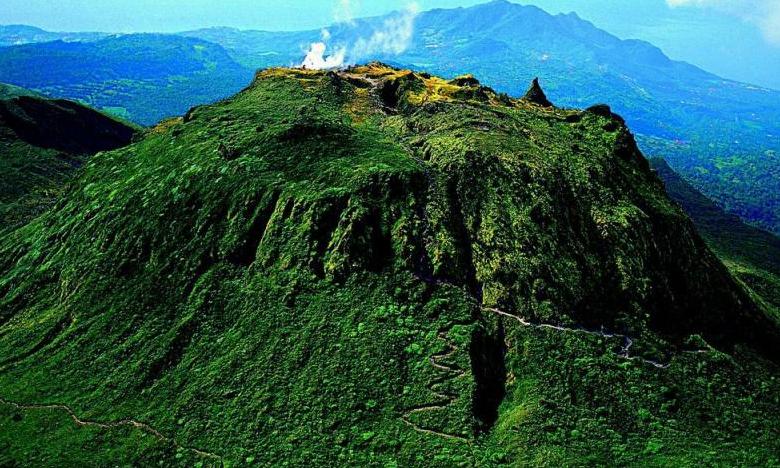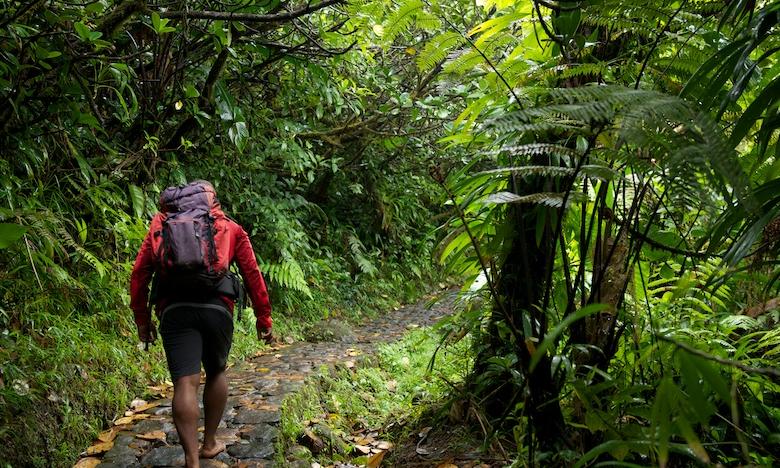Guadeloupe is an Ecotourism Paradise and a Unique Caribbean Ecosystem
With 77% of its territory classified as a natural reserve, the Guadeloupe Islands are definitely a top destination for ecotourists and other earth-conscious travelers. The constellation of five islands is totally unique in the Lesser Antilles, because each island offers to outdoor-oriented visitors a chance to explore different tropical ecological attractions.
Nature Protection Programs
Guadeloupe's authorities have always taken the country's environmental interests to heart. Conserving ecological heritage is what has motivated more than 30 years of protecting sea turtles and establishing national days dedicated to cleaning sea beds, the coastline and rivers.
For example, the French Initiative for Coral Reefs (Initiative Française pour les Récifs Coralliens, or IFRECOR) is in charge of protecting the coral reef around the Pigeon Islands and studying the evolution of the ecology and human habits. Elsewhere, a pilot project is creating artificial reefs as part of a Sustainable Development Program of the Autonomous Port of Guadeloupe. The Ti-Tè Association also aims to protect the wild inhabitants of the Petite-Terre islands, such as the iguana, sea turtles and birds.
The Caribbean Sea is a special habitat for the feeding, reproduction and migration of marine mammals. Twenty-four species have been identified in the Guadeloupe Islands' waters. With this in mind, Guadeloupe authorities were pleased to collaborate with mainland France in the creation of the AGOA Marine Mammals Sanctuary, designed to ensure the conservation of marine mammals in waters under French sovereignty and jurisdiction in the French West Indies.
UNESCO Biosphere Reserve: the Guadeloupe Archipelago of Guadeloupe National Park and Grand Cul-de-Sac Marin Nature Reserve Recognizing as one of the planet's highest biodiversity hotspots, the Guadeloupe Archipelago – composed of Guadeloupe National Park and Grand Cul-de-Sac Marin Nature Reserve – was declared a Biosphere Reserve by UNESCO on February 15, 1993, one of only 25 such designations in the world. With its central zone located on Basse-Terre, the reserve focuses on three main types of ecosystem: lagoons, mangroves and swamp forest.
However, it also contains the highest peak in the Lesser Antilles: the mildly active volcano of La Soufrière – its last eruption was in 1977 – which reaches an elevation of 4,813 feet above sea level. The volcano, surrounding mountain range and 66 square miles of covering rainforest are all part of Guadeloupe National Park, the seventh largest national park of France. Created in 1989, it protects the most extensive forest in the Lesser Antilles and hosts 300 species of trees, 270 varieties of fern and 100 varieties of orchid. Its wildlife includes 28 species of birds, 11 species of mammals, 11 species of bats and one indigenous bird (the black woodpecker). It can be visited via its 136 miles of marked trails blazed by the ONF (National Forest Office).
The adjacent Grand-Cul-de-Sac Marin Nature Reserve is 14 square miles at the heart of a vast bay closed off by the longest coral reef in the Lesser Antilles. An ambitious project is underway to return the Antilles manatee to the bay of Grand-Cul-de-Sac Marin. One has been introduced with another expected.
La Désirade National Natural Reserve
La Désirade, the oldest island of the Caribbean, is a National Geological Reserve. It is also the sixth largest natural site in the French overseas territories and the largest geological nature reserve. Created in 2011, this unique location protects special endemic fauna and flora native to a volcanic outcropping, like the “Tet a langle” cactus.
Cousteau Reserve
The Cousteau Reserve is a protected underwater ecosystem with vibrant coral reefs and gardens, abundant marine life and several wrecks covered with sponges. Named after Jacques Cousteau, the reserve is a must-see site for divers, snorkelers and kayakers. In the Ponti Garden, for example, are found a great variety of colorful crinoids, azure and pink vase sponges, branching tube sponges and hundreds of vividly colored parrotfish, queen angelfish, Creole wrasses and blue chromis. Not to be missed is the underwater statue of Captain Cousteau.
Other Reserves
Tropical flora and fauna can be appreciated in other superb parks as well. Petite-Terre National Nature Reserve is home to several species of birds, turtles and around 10,000 iguanas. The Parc Floral de la Montagne aux Orchidées in Deshaies has a magnificent collection of orchids and rare trees.
Architectural Heritage and the Preservation of Culture
In its forts, Colonial-era buildings and old wooden house, the Guadeloupe Islands have preserved some great architectural heritage. The St-Pierre and St-Paul Church in Pointe-à-Pitre, the leper colony on la Désirade, Fort Napoleon in Les Saintes, Fort Louis Delgrès in Basse-Terre and many other structures are all vital parts of France's cultural heritage, which is also one of the pillar of ecotourism. Along similar lines, the rhythm and diversity of island tradition – like the Gwo-ka Carnival drums of Guadeloupe, and the coffee, sugarcane and spice trails – is also an integral element of the country's ecotourism appeal.



